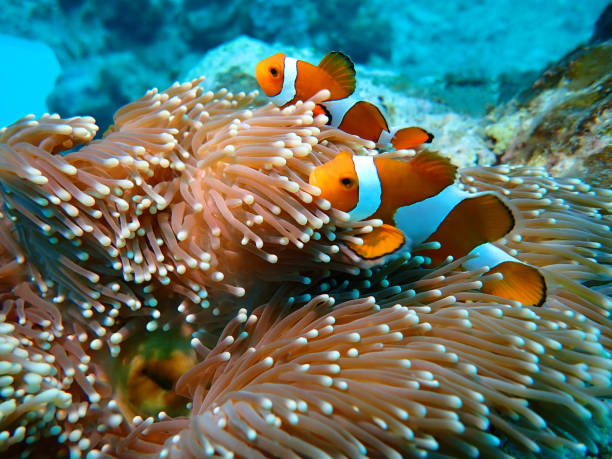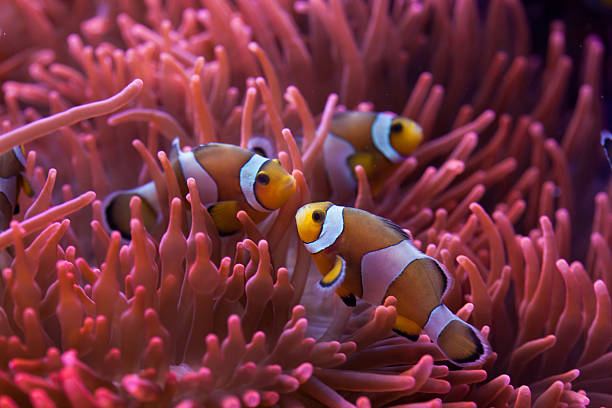How Fast Do Clownfish Grow: Tips for Faster Growth
Clownfish are one of the most popular fish in the world and for good reason. These colorful, entertaining fish are known for their quirky and fun personalities. Clownfish are difficult to identify without a close look, but there are some common characteristics that will help you identify this type of fish.
Clownfish are a type of fish that can grow up to six inches in length in a span of 5 to 6 years. Clownfish are a type of fish that typically grow an inch every year. They can grow much faster in the aquarium setting, but typically growth rates slow down as the fish moves into the wild.
Table of Contents
How Big Do Clownfish Grow?
Clownfish are a popular aquarium fish. Clownfish grow quickly and can reach lengths of up to six inches. They are small, colorful fish that can be kept in a small aquarium.

How Do Clownfish Grow?
Clownfish are a popular aquarium fish and for good reason. They are easy to take care of, relatively low-maintenance, and make great additions to any tank. Clownfish come in a variety of colors and patterns, making them appealing to many aquarists. However, one thing that all clownfish have in common is their rapid growth rate. Clownfish can reach a length of up to three inches within 2 to 3 years and can grow up to six inches at a rate of about an inch a year.
What Factors Influence Growth of Clownfish?
Most clownfish grow very quickly when they are first born, but as they get older their growth rates slow down, and this is because of different factors.
Food
Clownfish feed primarily on small fish, shrimp, and other crustaceans. They will also eat fruit and vegetables if they are given the opportunity. Clownfish generally do well on a diet that is based around this type of food.
Tank Size
A clownfish’s tank size should be based on how many fish the aquarium can hold and still have enough room for the clownfish to swim around. The minimum tank size for a single clownfish is 10 gallons, but a 20-gallon aquarium is ideal.
Water Condition
Clownfish are tropical fish that require a water conditioner to thrive in captivity. Proper water conditions for clownfish include a temperature between 75.2-80.6 degrees Fahrenheit, pH of 8.0-8.4, and seawater hardness of at least 7-9 degrees dH.
Environment
The environment in which a clownfish lives affects its growth rate. If the clownfish is raised in captivity, its growth will be faster than if it is taken from the wild.
Maturity
Clownfish reach maturity at about two years old. At this point, they are large enough to fend for themselves and can start breeding.
Health Conditions
Clownfish are tropical fish that typically grow to between 2 and 6 inches in length. They are generally considered to be healthy fish, but they can suffer from a variety of health conditions. Some of the more common conditions clownfish can suffer from include fin rot, Ich, and parasites.
Clownfish are generally healthy and can live for many years with proper care. However, some health conditions that can affect clownfish include:
- Parasites such as Ich
- Disease caused by bacteria, viruses, or parasites
- Fish injuries
Anemones
Anemones are a great option for clownfish if you want them to mature better and faster as they provide plenty of places to hide and some places to explore. Some anemones even have tentacles that can be used to catch food.

How to Make Clownfish Grow Fast?
There’s no secret to making clownfish grow fast, but you do need to provide them with the right environment and food. Clownfish are tropical fish that need a warm climate, plenty of room to swim around, and a steady diet of meaty foods.
Feeding Tips
A clownfish’s diet is very important to their overall health and well-being. Most clownfish eat small live organisms such as shrimp, but they will also eat flakes, pellets, or food that has been soaked in water. Clownfish should be fed at least once a day, but more often if they are inactive or seem to be eating less. If your clownfish is not eating, it may be sick and should be checked out by a veterinarian.
Why Aren’t My Clownfish Growing?
There are several reasons why your clownfish may not be growing as quickly as you would like. One potential issue is that they may not have enough food. Make sure you are providing them with a varied diet and plenty of freshwaters. Another potential issue is that they may be stressed out or injured. If you notice any changes in their behavior or appearance, be sure to take them to a veterinarian for evaluation.
When Do Clownfish Mature?
Clownfish reach maturity around two years old. They grow quickly during their first year but reach their full size and sexual maturity at two years old.
How Fast Do Clownfish Fry Grow?
Fry not only grow quickly when young but also reach their full size and sexual maturity much faster than adult clownfish. Though most fry will mature at around two years old, some can mature as early as one year old.
Feeding Clownfish Fry
The clownfish are omnivorous and will feed on a variety of things, but they are especially fond of algae. They will eat small pieces of food several times a day. It is important to provide them with plenty of fresh food so that they do not grow too large or develop health problems.
Size Differences in Other Popular Clownfish Types
Percula Clownfish
The Percula clownfish is a small fish that can grow up to 4.3 inches long.
Maroon Clownfish
The Maroon Clownfish can grow to be about 6 inches in length.
Clarkii Clownfish
Clarkii clownfish grow rapidly, reaching a size of about 4 inches in length.
Tomato Clownfish
The tomato clownfish grows to be about 5.5 inches in length.